RTIC vs YETI: Battle Of The Coolers
Outdoor activities during the weekend are fun. Whether it’s a camping trip, tailgating, a day at the beach, or just fishing, prior preparations are necessary. If it’s hot and sunny, you’ll need to carry a cooler to keep your drinks cool.
You wouldn’t want a warm drink in the scorching sun during summer, would you?
If you are looking for the best coolers in the market, there are two most popular brands. Yeti coolers have been around for a long time and are bear-resistant, premium coolers.
RTIC, on the other hand, are decent coolers and cheaper. This article will compare the two to make it easier for you to make a choice.
YETI
Yeti was established in Austin, Texas, in 2006 by two brothers Roy and Ryan Seiders. Since then, it has gained popularity and has become a favorite brand for most people. Its guiding principle has been to design and make premium quality everyday coolers. Their hard-sided and soft-sided coolers are now a household name. Yeti prioritizes quality and outlook over mass production and marketing schemes.
It first started making coolers but has since branched into other products, including drinkware, dry bags, and ice buckets.
Today, Yeti is famous for its high-quality products, and although they are often at a high price, it still has a considerable following.
RTIC
Coincidentally, RTIC was also founded by two brothers. John and Jim Jacobsen established RTIC in 2015. They saw an opportunity to compete against Yeti in the roto modeled ice coolers and took it.
RTIC coolers are very similar to Yeti. The likeness is striking except for one thing- price. RTIC aimed to create high-quality coolers but at a lower price. To make this possible, they made their overbuilt outdoor gear ready for the customer by selling it directly to the consumer. There are no middlemen involved, which makes them much cheaper options.
The brand has succeeded in gathering a fan base and become Yeti’s top rival.
Lawsuit Against RTIC
The likeness was incredibly striking, and Yeti filed a lawsuit against RTIC for patent infringement. That didn’t come as a surprise seeing how the two are almost similar when you compare them side by side.
The two companies decided to settle it. RTIC was required to pay Yeti in financial terms and, according to RTIC, “redesign only those products involved in the dispute.”
Both brands admitted the outcome was in every brand’s best interest and have been in regular operation ever since.
YETI vs RTIC Comparison
Although some products are strikingly similar, there are differences too. Both produce hard-sided coolers, soft-sided coolers, drinkware, bags, and other products.
This comparison, however, will focus on the coolers and drinkware. The essential factors in a cooler are ice life, construction and durability, size range, and price.
1. Hard-Sided Coolers
Yeti Roadie 20 vs RTIC 20
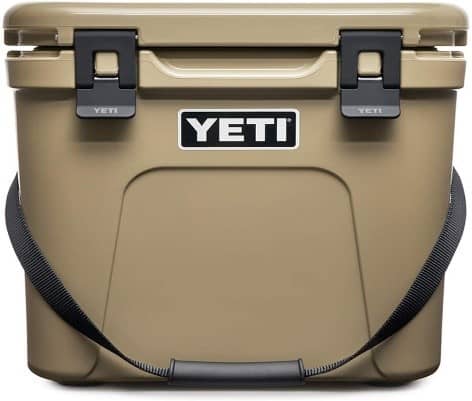
Both of them are smaller sizes, so the ice shelf life is lower. However, the RTIC is slightly bigger and allows five more pounds compared to the Yeti. Both coolers have an ice life of four days.
Both have excellent construction, with the Yeti featuring a soft handle and comfortable carry straps. You can add tie-down ice packs and a dry goods basket.
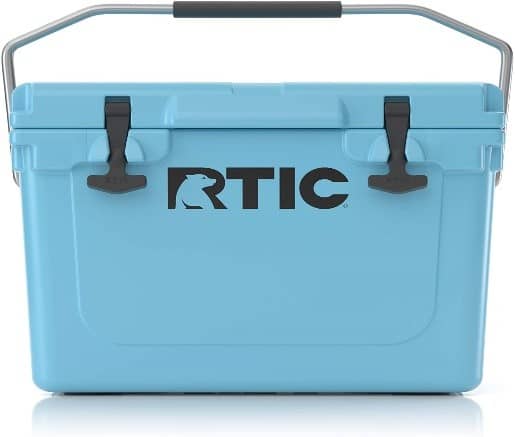
As for RTIC 20, it has a stainless steel handle and a drain plug to drain water. It’s also around $70 cheaper.
Yeti Tundra 45 vs RTIC 45
Yeti Tundra 45 has a larger storage space that can accommodate up to 28 cans and an ice life of 5 days. RTIC 45 allows more cans – up to 36 – which makes the ice life to be a bit longer for up to 6 days. It’s also cheaper.
So, if you’d want extra space at a lower price, consider the RTIC.
RTIC 65 vs Yeti Tundra 65
If you are looking for large coolers for hunting and camping trips, your best choice can be any of these two, depending on your preference. They both come with drains, T-latches, molded handles (both sides), non-skid pads, and comparable ice life.
The Tundra 65 weighs 29 lbs. when empty and allows up to 42 cans or 52 lbs. of ice with an ice life of up to 7 days. However, it has a smaller internal capacity. The cooler comes with a dry goods basket and a 5-year warranty. You can also purchase add-ons separately from Yeti like ice packs, rods holsters, sliding feet, beverage holders, among others.
The RTIC 65, on the other hand, is around $100 cheaper. It’s a bit bigger and can hold 64 lbs. or 75 lbs. of ice packs with an ice life of up to 8 days. However, it comes with a 1-year warranty, and you have to buy the dry goods basket separately.
If your primary concern is storage space, go for RTIC. But if you’re more concerned with materials and warranty, consider Tundra 65. It is best to note that RTIC has a limited size range; thus, larger sizes from Yeti couldn’t be compared.
2. Soft-Sided Coolers
RTIC Softpak 20 vs Yeti Hopper 18
Yeti’s Hopper 18 is the smallest soft-sided cooler. It is well insulated but can only carry ice because of its small size, and ice life is about three days. RTIC has Softpak 20, which allows almost the same weight as Yeti, and ice life is also similar.
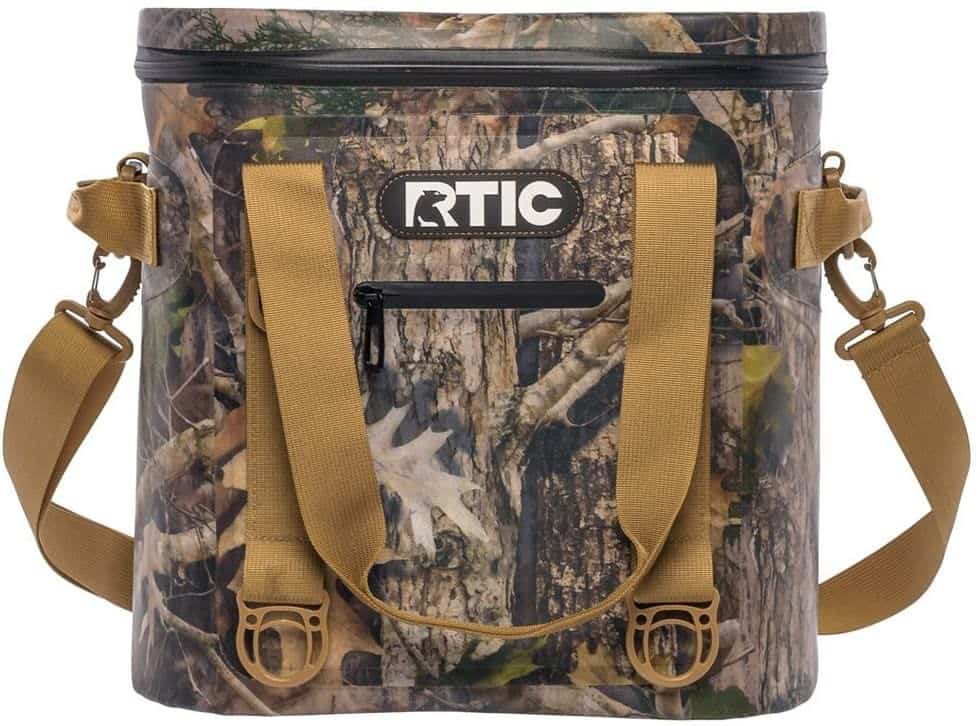
RTIC Softpak 30 Vs. Yeti Hopper 30
Softpak 30 has a box shape and is lighter, smaller, and larger. It allows up to 30 lbs. of ice or 30 cans. It’s also cheaper than its Yeti’s counterpart. However, it uses a HydroLock zipper, adding to the cost. But it’s waterproof and likely to last longer.
Yeti Hopper 30 is tote-shaped instead of the conventional box shape. The shape makes it comfortable when transporting, especially if you’re using the strap to carry it on the side. It can hold 28 lbs. of ice or 20 cans. However, it’s costlier.
It comes with a magnetic closure. Instead of a zipper, it has quick-release buckles. The good side is that the closure system is leak-resistant and whenever you leave the cooler open, the lid will snap shut. You don’t have to worry if you forget to close it. However, it can be hard to open, especially if you are using one hand.
RTIC Softpak 40 vs Yeti Hopper 40
As the largest RTIC Softpak cooler, it can hold up to 40 packs of ice or 40 cans. It’s easy to transport and comes with straps and carrying handles. It is made with StayDry material, has a mold-resistant liner and a waterproof zipper. Its ice life is about four days.
Yeti Hopper 40 hauls 36 cans, four cans less than RTIC. It comes with a HydroLok zipper that’s waterproof and provides airtight closure. It also has shoulder straps for easy transport. The ice life is almost similar to that of RTIC.
3. Drinkware
RTIC Can vs Yeti Colster
Both RTIC Can and Yeti Colster have stainless steel construction and a tight fight. They have vacuum insulation, and Yeti is dishwasher-friendly. However, Yeti’s is more expensive than RTIC’s.
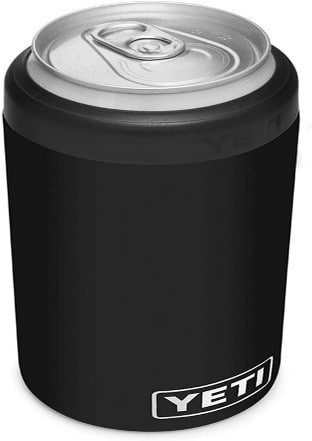
RTIC 12 oz. Lowball vs Yeti 12 oz. Lowball
Yeti’s Lowball has an 18/8 stainless steel construction, double-wall vacuum insulation, and an innovative no-sweat design. It keeps your drink hot, and temperature changes occur after 30 minutes. Additionally, it comes with a lid making it more convenient.
RTIC Lowball is almost similar to the Yeti, so it has identical results. However, it’s a bit cheaper and doesn’t come with a lid.
RTIC 20 oz. Tumbler vs Yeti Rambler 20
Both have a capacity of 20 oz., and they are made from stainless steel. With similar features to the other drinkware, the only difference is pricing. The Yeti is more expensive. They both can last for around 24 hours.
Ice Life
This is the component that’s arguably the most essential. You don’t want a cooler that has an ice life shorter than your needs. Moreover, if you’re going to spend large amounts of money, you don’t want to waste it on a cooler that can barely retain the temperature.
Among the two brands, RTIC has a longer ice life compared to Yeti. Their large sizes, plastic construction, and thicker walls make them better at retaining ice. Yeti have better quality coolers, although with shorter ice life and smaller sizes.
Some coolers claim to have an ice life of 8 days, others even more. Take into consideration that this might be under ideal temperatures. When left in the sun on the beach during summer, the ice life might be shorter.
Construction and Durability
Yeti, having been around for longer and with more experience, have tough products with durable construction. They resist the impact that comes with occasional drops or collision with harder objects.
Made from tough polyethylene plastic, the coolers are durable and can survive through anything the environment throws at them. They have a molded retro-construction, thick insulated walls, heavy-duty latches, non-slip feet, tie-down, and premium hardware. RTIC also possesses the same great qualities that make them durable.
Both Yeti and RTIC have soft-sided coolers with a puncture-resistant outer shell, high-quality foam, antimicrobial liner, and excellent stitching. For the drinkware, both are made from high-quality stainless steel and double-wall vacuum insulation.
From the vast similarity in construction, RTIC had a good grasp in duplicating the features of Yeti in their products.
Size Range
Yeti has a wider size range than RTIC, maybe because they have been in the market for a long time. For coolers, the larger the size, the longer the ice life. Of course, this is dependent on other factors such as materials and how frequently you open the coolers.
RTIC has a limited size range. Maybe they’ll extend their size offers. As a result, we couldn’t compare larger Yeti sizes because there is no matching RTIC. However, for the compared coolers, RTIC is larger. Despite having copied most of the features and design from Yeti, they can still afford to offer more storage space, thus more ice life.
Bear-Proofing
Yeti can boast of being certified bear-proof. They filled coolers with treats and let grizzly bears try to open them. At the corner of the lid, there’s a designated hole for a padlock to lock your valuables in.
This is especially helpful if you’re going out camping or on a beach with liquor or valuables. Bear certification is meant to assure customers that nothing can break into the coolers and whatever they keep in there is safe.
RTIC has not yet been certified as bear-proof, but if they did, it’d be obvious that they’d hold up just like the Yeti counterparts.
Customer Service and Warranty
Customer service and brand reputation go together. Here, Yeti tops in terms of brand reputation or popularity as most people have known the brand for a long time. Also, RTIC relies on word of mouth as their advertising method, while Yeti has invested in advertising, thus building brand recognition.
As for warranty, different products have different warranties. Yeti offers a 5-year warranty for its roto-modeled coolers and a 3-year warranty for the soft-sided products. RTIC offers a 7-year warranty for the hard-sided models and a 30-day warranty for the other items.
Having spent hundreds of dollars on a product, you’d at least want assurance that the manufacturers can sort you out if it develops any issues. RTIC products are cheaper than Yeti, but with their short warranty periods on the other products, one might be tempted to think the low prices compromise quality.
Price
As we have already seen, RTIC products are cheaper than Yeti, with some having a price difference of $100. It’s hard to point out why a Yeti is so pricey. Marketing may be one reason, but others will argue it’s the ‘original’ brand because it came earlier and the bear certification.
There are other coolers on the market, such as pelican, orca, canyon, grizzly, and others, but when you’re looking for premium-quality coolers, your choice narrows down to RTIC and Yeti.
Conclusion
Whenever you’re considering which cooler to buy, it usually leaves you with two options: the popular and premium-quality but expensive Yeti or the also high-quality but cheaper RTIC.
Whichever you choose will depend on the storage capacity you are looking for, the quality of the cooler, ice life, and price.
Even though Yeti is expensive, you will never go wrong. You’re guaranteed quality as well as customer support whenever you have an issue with the product.
RTIC is an ideal choice for people on a budget or who embrace frugality but still want a quality cooler. Its ice life is also higher thanks to its larger capacity. However, their customer care is not as great.

FAQs
Which one is better, RTIC or Yeti?
Your choice will depend on preferences. Both of them have impressive build quality, and the differences in functionality are almost non-existent. However, the main difference is that RTIC is less expensive compared to Yeti. Usually, the coolers also have a larger storage capacity.
Yeti is an expensive but popular brand known for quality products. Their customer care services are also top-notch. If you’re on a budget but require a quality cooler consider RTIC. But if you rely on a brand name, superior customer service, and quality, go for Yeti.
Are Yeti coolers worth it?
Yes. Yeti coolers are worth every dime. Their construction, quality, customer service, and warranty are on point. The company has built a good reputation for the quality of its products. They are not only visually appealing but also perform their work on insulating whatever you put inside perfectly. They are expensive but worth it.
What is Yeti good at?
When listing the advantages, Yeti offers a wide range of sizes. There are smaller coolers and large sizes to accommodate your needs. Whatever your cooler needs are, you can always find the perfect size with Yeti.
Is RTIC as good as Yeti?
Yes, for the most part, it is. RTIC coolers are made from quality materials similar to Yeti and have almost the same design. Quality isn’t much of an issue to both. The difference occurs in the warranty offered for RTIC products and the number of accessories compatible with the coolers. While Yeti is compatible with a wide range of accessories, RTIC is not.
What is RTIC best at?
The best thing about RTIC is the price, which is significantly lower than that of Yeti. Even with the quality almost matching that of Yeti, it’s affordable. Another advantage is its large capacity. The company has managed to tweak its designs to offer more capacity and with longer ice life.
Which brand is better than RTIC and Yeti?
There are not many brands that can compare with the two in terms of quality and functionality. However, Orca Coolers is the closest and even has features not found in Yeti.
What accessories can you use with a cooler?
Some coolers come with some accessories, but for others, you have to purchase the accessories separately. A dry goods basket is a common accessory. Others include beverage holders, ice packs, cooler divider, cutting boards, locking strap, fishing rod holder, accessories holder, etc.
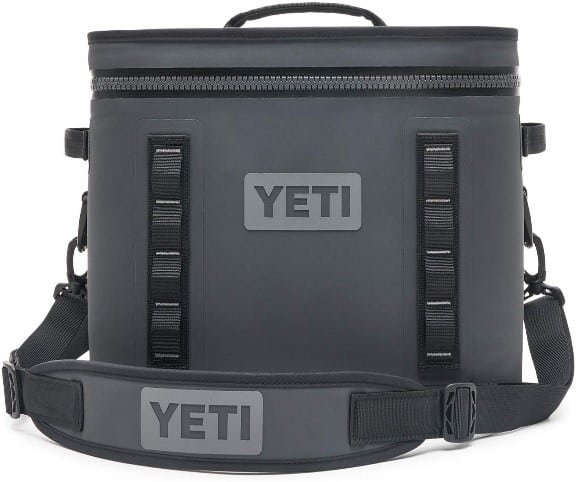
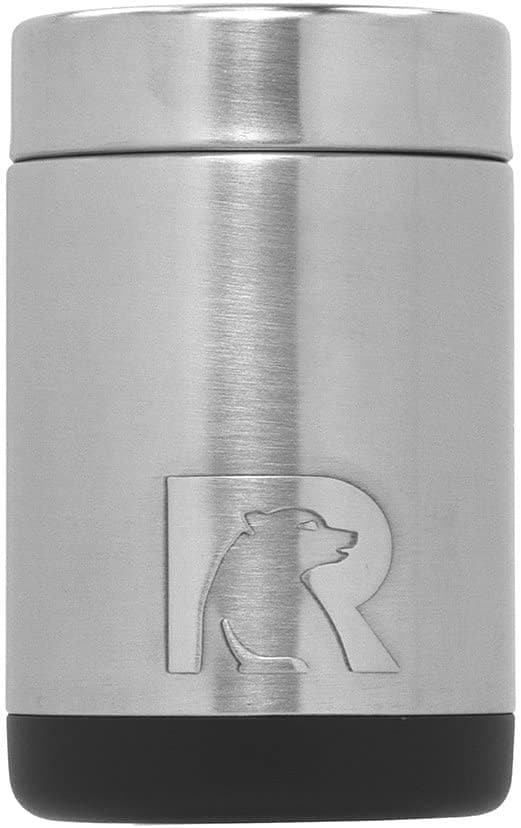
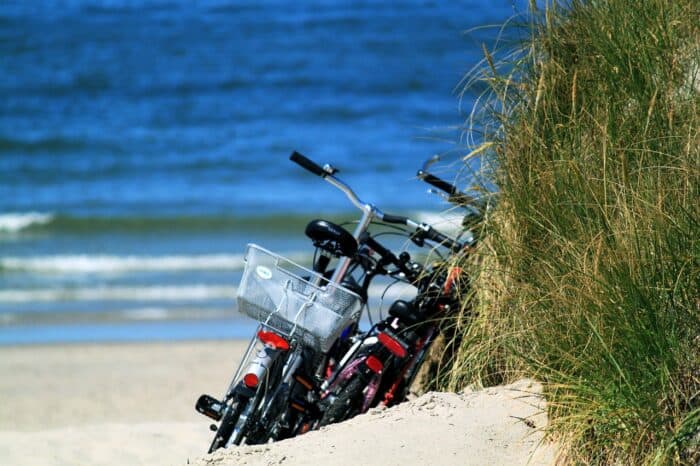
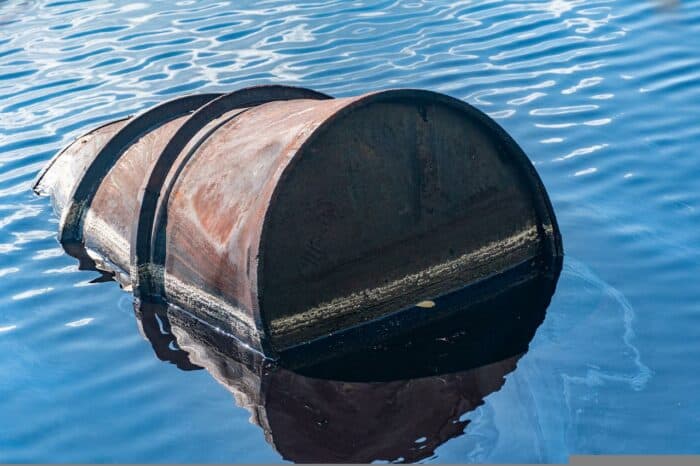
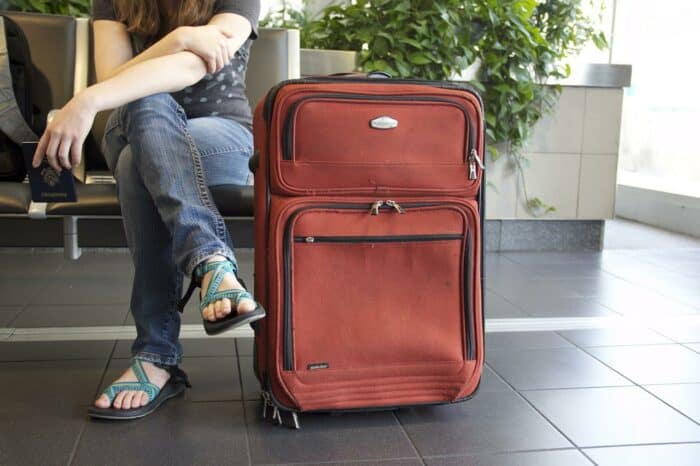
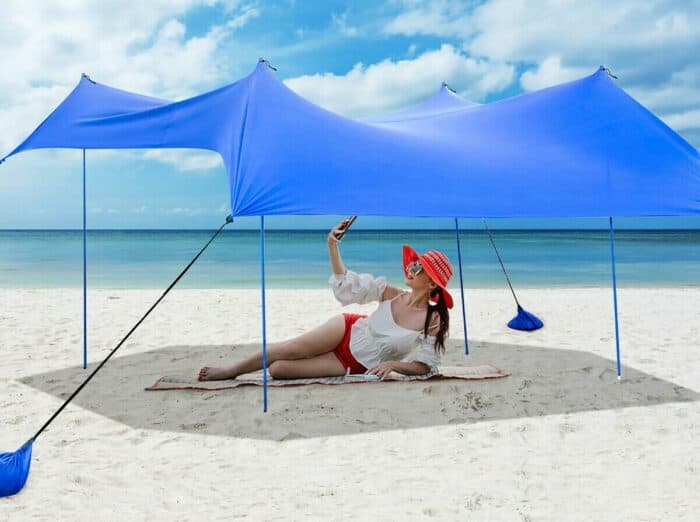








5 Comments
Carolyn Beyant on July 24, 2021
I haven’t tried the RTIC Brand, but have several YETI’S drink lowball and was disappointed with my first hot use. I think it was definitely defected. However, I did notify YETI and they happily replaced it within a few day without a problem…
I would love the opportunity to try the RTIC brand in comparison.
Thanks for sharing this brand. I had never heard of it, until now.
Alan Donovan on November 8, 2021
I completely disagree with your comment “But if you’re more concerned with materials and warranty, consider Tundra 65.”. Warranty may be longer but I’d take RTIC craftsmanship and materials any day over Yeti. RTIC is bigger and the company has PHENOMENAL customer service. RTIC has a 110 and a 145 as well.
Dale Rebholz on April 8, 2022
Been using RTIC since they started. Price is huge factor for me. Have some YETI items, but prefer RTIC. Can’t tell the difference. I’m older and wish RTIC had cooler on wheels like YETI
Dalton Bourne on August 11, 2022
I purchased this soft cooler from NORCHILL in anticipation of a 2-week road trip. Kept the food cold. I used three modest-sized bags of ice which stayed (mostly) frozen for at least 24 hours. I am *very* happy with this cooler!
fuzzy on September 3, 2022
your review does not specify which cooler your bought, so it’s really kind of useless.